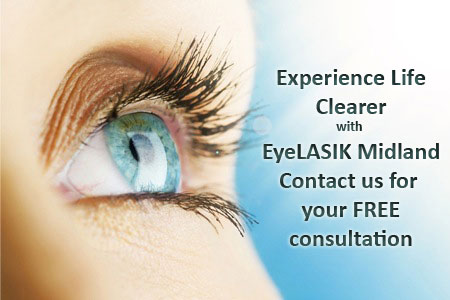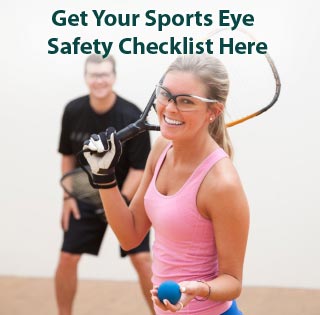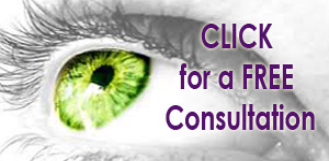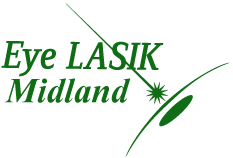
by EyeLASIK | Apr 23, 2014 | Eye LASIK
Eyesight naturally changes as we age. As we grow older, our eyes go from being able to refocus easily to having a harder time seeing detail. People who used to be able to see well at distances and close up in their 20s will need glasses for reading by their mid-40s. But while glasses can help, there’s another category of eye problems that post 50s may unwittingly be making worse: eye disease.
The most common eye diseases all increase with age starting at about age 40 to 50. The prevalance of glaucoma, cataracts and dry eye begin to present themselves over the age of 40. Caught in time these problems can be addressed before they cause severe vision loss, but there are a number of behaviors that can hurt aging eyes more than they help them. Here are five ways you’re hurting your vision:
1. Smoking
We all know the damage smoking can do to your body, but many may not realize the effect the bad habit has on your eyes. It can increase your risk of suffering from cataracts and retinal diseases that lead to vision loss. It also makes existing eye problems — age-related macular degeneration, cataracts and optic nerve damage worse. Smoking affects circulation. As we get older, life forces tend to challenge our circulatory systems — add smoking to it and it’s even worse. That’s because having healthy circulation of blood to your eyes means your eyes are getting the oxygen and nutrients they need to prevent eye diseases and eye stress.
2. UV Exposure
Similar to how it causes damage to the skin, UV light damages your DNA which leads to cellular damage. The body has repair mechanisms, but over time these damages accumulate and the body can’t compensate after a certain point. You can see damage to the surface structures and the deep structures of your eye, like your retina.
3. Accidental, Everyday Trauma
From playing sports to handling everyday chores like mowing the lawn, protecting the eyes should be high priority.
4. Not Taking Proper Care Of Your Overall Health
Things like managing your cholesterol and blood pressure can improve your eyesight and contribute to eye health. These things all contribute to eye health. If the person has high blood pressure, they’re at a higher risk for having damage to the eye that can lead to vision loss. There are certain eye diseases associated with diabetes and high blood pressure.
5. Computers and iPads
Though the effect technology has on our eyes has been well-documented, but people still seem to forget. When people do concentrated near work they tend to not blink as often as when they’re doing more active activities. Your eye is focused on one spot for a long time, and your eye muscle may fatigue and feel a sense of strain.
There are several ways you can take control of your eye health:
Make an appointment for an eye exam.
Many people take their good vision for granted. Unless they have a problem, they don’t think about what they should do to get their eye health looked at. Without that eye exam it’s difficult to identify a problem and treat it. So much of blindess and vision loss is preventable, but the key is early detection.
Practice good eyecare safety at work and at play.
Wear sunglasses that have UV protection. When picking your shades, make sure you look at pairs that block 99-100 percent of UVA and UVB light, along with other eye-protecting features, according to WebMD. Also make sure to invest in a pair of safety goggles to keep twigs, leaves and other debris from your eyes during household chores like mowing, or if you have a labor-intensive job.
Nutrition
Nutrients that are found in green leafy vegetables and omega-3 fatty acids seem to be particularly helpful for dry eye problems. The good news is that the same diet that helps your heart is probably also good for your eyes. A diet low in fat and rich in fruits, vegetables and whole grains can pay benefits not only to your heart but to your eyes.


by EyeLASIK | Apr 16, 2014 | Eye LASIK
The iLASIK procedure is one of the most precise medical procedures performed today. iLASIK surgeons now have precise tools to painlessly measure and map the uniqueness of both of your eyes – down to the most minute characteristics individual to you. 3D mapping technology literally creates a blueprint (or fingerprint) of your eye, allowing the iLASIK surgeon to then custom-fit the iLASIK procedure for each of your eyes.
The iLASIK procedure itself is revolutionized by the use of two computer-guided lasers – instead of one as in earlier generations of LASIK. The first, ultra-fast laser creates a thin corneal flap, which is then folded back to allow the second laser to correct your vision based on the exact specification/measurements of your eye(s). The procedure takes just minutes. Patients experience a quick virtually painless procedure with the potential of 20/20 or better vision and outstanding safety as a result of reduced flap complications.
Final post-op visits are conducted with your iLASIK surgeon one day, one month and three months later. You are free to resume your active lifestyle, now with the potential of 20/20 or better vision.† Remember, it was the very same technology advances used in the iLASIK procedure that convinced the military and NASA that iLASIK was finally good enough for their mission critical personnel. Even your most-extreme lifestyle is nothing compared to being ejected from an F-16 or the G-Forces of shuttle rocket blast-off.
Why should I choose iLASIK over other vision correction options?
Just like the tailoring of a fine suit or couture fashion, the iLASIK procedure is tailor-made for you, your vision and the unique characteristics of your two, individual eyes. 3-D mapping, precise measurement and the use of two of the most advanced lasers differentiate the iLASIK procedure from all others. Consumers not only require 20/20 (or better) vision for their active lifestyles, but also prefer not be bothered with the daily inconvenience of glasses and contacts.
Who are candidates for the iLASIK procedure?
There are 290 million candidates for iLASIK around the world. If you are 21 years of age or older and wear glasses or contact lenses to correct nearsightedness, farsightedness, astigmatism or mixed astigmatism, you may benefit from iLASIK. See your ophthalmologist for more information and to determine if you are a candidate for iLASIK.
Can you tell me more about the iLASIK Procedure?
The iLASIK Procedure is the culmination of everything we’ve learned about laser vision correction surgery over the past decade. It combines the most advanced LASIK technology in one comprehensive solution, it is an all-laser procedure and it produces truly personalized results.
How is the iLASIK Procedure different from all of the other LASIK procedures I’ve heard about?
It’s the technology that really makes the iLASIK Procedure different. It uses the most advanced technology at every step, from your personal vision evaluation where we create an individualized 3-D map of your eyes; to a precise LASIK flap using a laser, not a blade; and finishing with one of the most precise, accurate forms of laser vision correction available today.
Keep in touch with Eye LASIK Midland by joining our newsletter. You’ll be entered to win a great pair of Tory Burch sunglasses. Drawing will be held at the end of May. Click HERE or on the image below!


by EyeLASIK | Apr 9, 2014 | Eye LASIK
Choosing a surgeon for LASIK is not as difficult as it can be for many other kinds of surgery. But a bad eye procedure outcome can affect your life almost as negatively as a bad heart operation outcome. That’s why it is so important to choose the best surgeon available
Finding a good LASIK Surgeon
There are several factors to consider when you check for a qualified surgeon, such as great credentials and willingness to work with a patient to resolve if a possible problem arises following a procedure.
1. Licensing. State licensing boards can validate a surgeon’s credentials. You also can check a surgeon’s credentials through the National Practitioner Data Bank.
2. Board certification. Ask if your surgeon is board certified beyond having a basic license to practice medicine. This means that an entity recognized by the American Board of Medical Specialties has certified the surgeon to practice in his or her specialty. The American Board of Ophthalmology is one such entity that requires board-certified physicians to complete specific training and continuing education related to the specialty.
3. American College of Surgeons (ACS) membership. The ACS upholds ethical standards of conduct for all members, who must be board certified.
4. Advertisements. Many refractive surgery centers advertise in newspapers, on the radio and on TV. Some ads are more informative than others. Some tout extremely good pricing. But while this can be a starting point, an ad or a procedure price should not be your only criterion when choosing a doctor.
5. Referrals. Ask for a referral from your regular eye care practitioner, whether an optometrist or an ophthalmologist. Tell him or her that you want the LASIK surgeon in your area with the best reputation in the profession.
6. Other resources. Visit the American Academy of Ophthalmology’s website at www.aao.org, where you can use the “Find an Eye MD” feature. Be sure to specify “refractive surgery” under “specialty.” The American Society of Cataract and Refractive Surgery (ASCRS) also maintains an online membership list and “Find a Surgeon” feature.
With over 30 years of experience and over 30,000 surgeries, you can be assured our surgeons are the most experienced in central Texas. Additionally, our surgeons are both Board Certified by the American Board of Ophthalmology, members of the American Society of Cataract and Refractive Surgery, Texas Ophthalmologic Association, Texas Medical Association and the American Academy of Ophthalmology. If you’d like to read more about our surgeons, please visit our website at eyelasikmidland.com/surgeons. The doctors of Eye LASIK Midland selected Dr. Tschoepe and Dr. Walters to provide surgical services because of the excellent results they achieve and their history as innovators in eye surgery. Since 2000 Eye LASIK Midland has been the most trusted laser center on the Permian Basin as evidenced by those who know us best. More eye doctors refer their family members and their patients to Eye LASIK Midland than any other provider in this area.
Want to more about Eye LASIK Midland? Sign up for our newsletter & be entered to win a great pair of ladies Tori Burch sunglasses.


by EyeLASIK | Apr 2, 2014 | Eye LASIK
With April being Sports Eye Safety awareness month, we thought it’d be appropriate to remind parents and athletes, young & old about the dangers of eye injury while participating in sports.
Sports-related eye injuries are quite common, yet the number of children who use protective eyewear (safety glasses or goggles) is extremely low. More than 600,000 eye injuries related to sports occur each year, and approximately one-third of these injuries occur in children. Only 15 percent of children reported wearing eye protection “always” or “most of the time” when participating in sports, hobbies, or other activities that could cause eye injuries. Yet, the majority of the eye injuries that occur in school-aged children are sports-related.
Eye injuries most often occur in baseball, basketball, ice hockey and racquet sports, yet few people wear protective eyewear when playing these sports. In fact, the American Academy of Ophthalmology recommends protective eyewear for any sport even for children who don’t wear glasses or contacts. Studies show that protective eyewear does not hinder the player’s sight, and some athletes even play better because they are less afraid of getting injured or hit in the eye. All athletes, even the weekend warriors, should wear protective eyewear regardless of whether or not they wear glasses or contacts.
Here are some helpful tips to protect eyesight while playing sports:
- All sports protective eyewear should meet the impact standards of the American Standards for Testing and Materials (ASTM). An optometrist can make sure that glasses and or goggles are fitted properly. There are also a wide range of polycarbonate face masks and guards that can be attached to helmets or worn by themselves.
- Everyday fashion eyewear is not held to the same protective standards as eyewear products labeled as protective eyewear for sport use. The lens in a child’s regular eyeglasses could easily pop out and puncture or cut the eye. A frame mangled from impact could also injure the eyes and ocular region of the face.
- Lenses should be made from polycarbonate materials because they provide the highest level of impact protection; they can withstand a ball or other projectiles travelling at 90-miles per hour. Polycarbonate lenses are available in both eyeglasses and sunglasses.
- Just because a sport requires a helmet or face guard, it doesn’t mean that your eyesight is protected from injuries. They are still exposed to danger from sports equipment or an opponent’s fingers penetrating the openings of a face mask. These tips apply to anyone participating in sports regardless of age.
Protective eyewear can be purchased at sporting goods stores as well as eye care professionals’ offices.


by EyeLASIK | Mar 26, 2014 | Eye LASIK
If you’re tired right now, you’re not alone. The Centers for Disease Control and Prevention (CDC) finds more than 40 million Americans get fewer than 6 hours of sleep per night.
Lack of Sleep and Your Vision:
With the increasing speed and stress of modern life, finding time for rest and a good night’s sleep is more important than ever. Without enough sleep the body can struggle to function properly, including the eyes, making daily tasks more difficult and leaving you more exhausted. Even when you’re relaxing, such as watching television or reading, your eyes are still working hard. Getting some shut-eye is really the only time your eyes have to rest and restore.
Symptoms of No Sleep:
One of the common giveaways of insufficient sleep is dark circles under the eyes, however, a lack of sleep, particularly over time, can have a more serious impact on the health of your eyes. Research has shown that your eyes need at least five hours sleep each night to allow for effective recovery from the day’s activities. One common side effect of lack of sleep is eye spasms. Eye spasms are defined as involuntary eye twitches that occur when you have a spasm in your eyelid. These involuntary spasms are known as myokymia. Eye spasms should not be painful or do damage to your vision; however, they can be very aggravating and disruptive. Avoid eye spasms by making sure you get an adequate amount of sleep per night.
Over time, lack of sleep can lead to serious ramifications on your vision including popped blood vessels due to eye strain. Additionally, a shortage of sleep can cause dry eye, a condition when tears do not adequately lubricate your eyes. When dry eye sets in you can experience some pain, light sensitivity, itching, redness or even blurred vision. If you find that you are having a difficult time falling asleep at night, there are various options for remedying the situation. One thing you can do is to try drinking a cup of chamomile tea shortly before you plan to go to bed. This is a great way to relax before sleep. Another method that works for many people is reading a book in bed. You will likely find yourself getting drowsy, and then you can simply shut off the lights and fall asleep.
Remember that your eyes are kept busy all day long doing their job, and sleeping is the only time that they really get a break. Make sure that they get the rest they deserve by making enough shut-eye a priority!
Eye LASIK Midland offers a new approach to laser vision correction – allowing patients to work with the primary eye doctor they’ve known for years. This means the patient’s optometrist performs all the work preceding the laser procedure, as well as all the follow-up visits. With Eye LASIK Midland, patients receive premium care from all the doctors they know and trust. Claim your complimentary consultation here or by clicking the image below. Better vision can be yours!


by EyeLASIK | Mar 19, 2014 | Eye LASIK
With the advent of smartphones, Kindles and iPads, we are constantly bombarded with technology. Our eyes are almost always staring at a computer or TV screen. Consequently, eye strain has become a chronic problem for many people.
Symptoms Of Digital Eye Strain
In order to help prevent eye strain caused by the use of digital devices, you should know what the symptoms are. Some of the more common symptoms include:
- Burning or itching
- Tearing
- Sensation of something in the eyes
- Blurry or cloudy vision
- A “pulling” sensation in the eyes
- Headaches that start after reading or being on a computer for longer than 15 minutes
Eye strain can be caused by a number of factors. Because you don’t blink regularly when reading of using a computer, the eyes can dry out causing burning, itching, and tearing as well as cloudy or blurry vision.
A pulling sensation can be caused by having prescription glasses that are not right or need to be updated, causing the eyes to overwork in an attempt to keep things focused. An incorrect prescription can also cause headaches.
Avoiding Digital Eye Strain
But you can avoid eye strain caused by computers and other technology. Some of the easiest ways to do this include:
- Taking Breaks: About every 45 to 60 minutes, take a break. Either get up from your computer screen and walk around, or simply focus on something off in the distance for a few minutes. Looking at an object in the distance helps relax the muscles of the eye that do all of the focusing.
- Using Artificial Tears: When you take your break, put a drop of a good artificial tear in each eye to help prevent them from drying out. You can also put drops in every 15 minutes while working if your eyes are particularly dry. Blinking more frequently will also help moisturize the eyes.
- Having Your Glasses Checked: If you start to notice a pulling sensation, or if you start having headaches in the afternoon, get your prescription checked by your optometrist or ophthalmologist. You may need a change. If you’re over 45, you may need reading glasses.
Adding an Anti-Reflective Coating: Glare from your computer screen or iPad can cause your eyes to become overworked. Consider adding an anti-reflective coating to your glasses or computer screen.
At Eye Lasik Midland, we’re in the business of healthy eyes. That’s why we use the most advanced technology in laser vision correction. Want to know more? Claim your free consultation here.

Page 12 of 13« First«...910111213»










